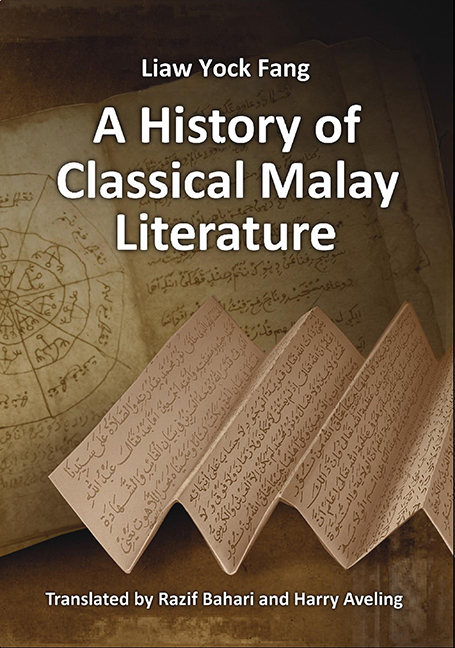Book contents
- Frontmatter
- Contents
- Preface
- List of Abbreviations
- Chapter I Folk Literature
- Chapter II The Indian Epics and The Wayang in Malay Literature
- Chapter III Javanese Panji Stories
- Chapter IV Literature Belonging to the Period of Transition from Hinduism to Islam
- Chapter V Literature of the Islamic Age
- Chapter VI Framed Narratives
- Chapter VII The Literature of Islamic Theology
- Chapter VIII Historical Literature
- Chapter IX Classical Malay Law Codes
- Chapter X Poetic Forms (Pantun and Syair)
- Bibliography
- Index
- Biographical Details
Chapter VII - The Literature of Islamic Theology
Published online by Cambridge University Press: 21 October 2015
- Frontmatter
- Contents
- Preface
- List of Abbreviations
- Chapter I Folk Literature
- Chapter II The Indian Epics and The Wayang in Malay Literature
- Chapter III Javanese Panji Stories
- Chapter IV Literature Belonging to the Period of Transition from Hinduism to Islam
- Chapter V Literature of the Islamic Age
- Chapter VI Framed Narratives
- Chapter VII The Literature of Islamic Theology
- Chapter VIII Historical Literature
- Chapter IX Classical Malay Law Codes
- Chapter X Poetic Forms (Pantun and Syair)
- Bibliography
- Index
- Biographical Details
Summary
The literature of Islamic theology (“Sastra Kitab”, a kitab is a book or a scholarly tome) is potentially enormous. On the one hand, R. Roolvink (1971) suggests that Islamic theological literature includes studies of the Quran, tafsir (the interpretation of the Quran), tajwid (Quranic recitation), arkan ul-Islam (the pillars of Islam), usuluddin (theology), fikih (jurisprudence), ilmu sufi (Sufism), ilmu tasawuf (mysticism), tarikat (the different religious orders), zikir (chanting the names of God), rawatib (non-obligatory prayers), doa (supplications), jimat (talisman), risalah (tracts), wasiat (wills) and kitab tib (folk medicine and spells). In a narrow sense, however, Siti Baroroh Baried limits sastra kitab to the mystical literature (sastra tasawuf) that developed in Acheh during the 17th century (Sulastin Sutrisno et al. 1985: 291).
Mystical literature is certainly a very important part of Islamic theological literature in Malay. According to A. H. Johns, mystical literature played an important role in the spread of Islam in the Archipelago. Firstly, the Sufi mystics were adept at imparting the doctrines of Islam in terms that the local populace could understand. Secondly, mysticism itself had its own attraction, as joining a religious order (tarikat) meant that one became part of a large and supportive family. Furthermore, many tarikat members were well-travelled merchants, who had studied in Islamic centres all over the world. During the first half of the 17th century, four main Sufi brotherhoods—the Qadiriyah, Naksyabandiyah, Syatariah and Suhrawardi—all flourished in Acheh (Hall, 1962: 37-47).
We can glean a little bit about the activities of the Sufis from the Sejarah Melayu (Malay Annals), which tells us that many maulana (religious scholars), syaikh (leaders) and makhdum (Sufi masters) arrived in Malaka to teach and spread Islam. The scholar Abu Ishak sent his book, Daru'l- Mazlum (House of the Oppressed), to Sultan Mansur Syah. Maulana Yusuf taught metaphysics to Sultan Mahmud. These servants of Allah were regarded as holy men who possessed extraordinary supernatural powers.
- Type
- Chapter
- Information
- A History of Classical Malay Literature , pp. 300 - 344Publisher: ISEAS–Yusof Ishak InstitutePrint publication year: 2013



